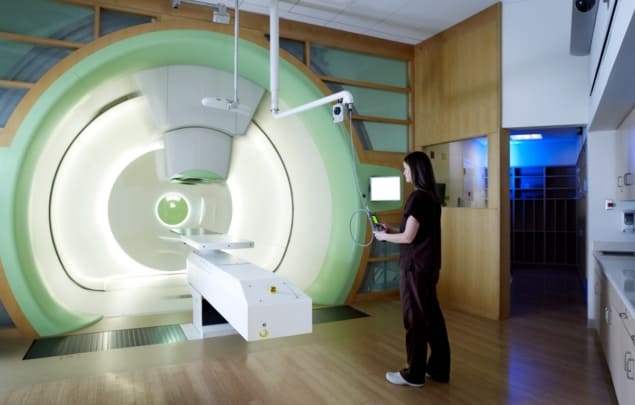
The finite range of a proton beam confers high dose conformality to the tumour, while minimizing irradiation of non-target normal tissues. As such, proton therapy is proposed as a preferred irradiation technique for treating childhood cancers, particularly those affecting the radiosensitive developing central nervous system.
Two newly published research papers add to the growing body of evidence showing the potential benefits of proton therapy for paediatric patients. Both studies were led by Christine Hill-Kayser from the Perelman School of Medicine at the University of Pennsylvania and the Children’s Hospital of Philadelphia.
Improving survival outcomes
The first study focused on children with newly diagnosed medulloblastoma, a cancer at the base of the skull (Pediatr. Blood Cancer 10.1002/pbc.27972). Older children with this disease generally receive radiation to the entire brain and spine. This approach, however, can be highly toxic to the developing brains of children aged four or younger, who are typically treated with intense chemotherapy regimens instead. Unfortunately, these young children often relapse, with the highest risk of relapse in the posterior fossa where the tumour is primarily located.
The researchers evaluated 14 patients aged five and under who received proton therapy just to the tumour bed following surgery and chemotherapy. Four patients relapsed after treatment: three within the central nervous system outside of the posterior fossa and one within the tumour bed after subtotal resection. Across all patients, the five-year overall survival was 84% (48–96%) and the recurrence-free survival was 70% (38–88%). In nine children with available performance status follow‐up, the researchers saw no significant changes in their Lansky performance status.
While the study only examined a small cohort, the findings demonstrate great improvement over historical survival rates of 30–60% in very young patients who received intense chemotherapy without radiotherapy.
“Our study, while small, shows promising outcomes when we use proton therapy to target just the area of surgery in these cases as opposed to irradiating the whole brain and spinal areas,” explains first author Amardeep Grewal, chief resident in radiation oncology at Penn. The researchers suggest that this approach should be investigated further in young children with medulloblastoma.
Reducing risk of brainstem damage
In the second study, the research team evaluated the rate of brainstem necrosis in 166 children with central nervous system tumours treated with pencil-beam scanning (PBS) proton therapy (Acta Oncologica 10.1080/0284186X.2019.1659996). The median maximum brainstem dose in the treatment course was 55.4 Gy(RBE). In four patients who had received prior radiation, the cumulative median maximum brainstem dose was 98.0 Gy(RBE).

Pencil-beam protons protect memory in children with brain tumours
The researchers found that patients treated with PBS experienced significantly less brainstem toxicity than those treated with older techniques such as double-scattered proton therapy. One patient who had previously received twice-daily radiotherapy and chemotherapy experienced brainstem necrosis. At 24 months, the rate of patients experiencing brainstem tissue damage from PBS was 0.7%.
“The effect of proton therapy on the brainstem has been a subject of much debate, but our data show that pencil-beam scanning proton therapy does not increase the risk compared to conventional photon techniques,” says first author Jennifer Hyatt Vogel, who completed this work whilst a resident at Penn.
The authors say that these data warrant further study, especially in high-risk patients and those who have had prior radiation therapy. “Regardless of technique, expertise in proton therapy planning and strict adherence to safety constraints is essential, particularly in treatment of tumours near the brainstem,” adds Hill-Kayser.



